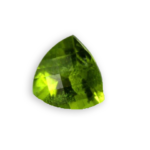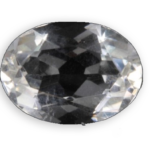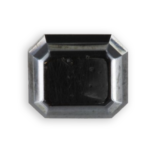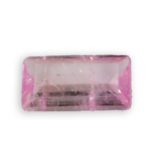
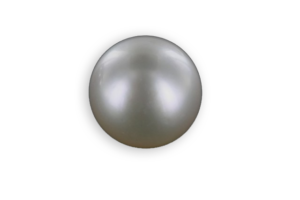
pearl
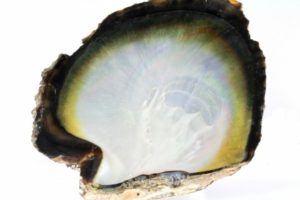
“pinctadine” pearl oyster from Tahiti
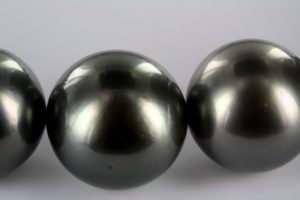
gray cultured pearls of Tahiti
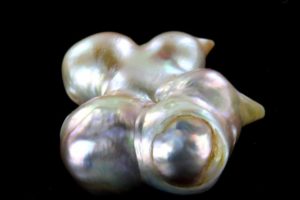
baroque cultured pearls
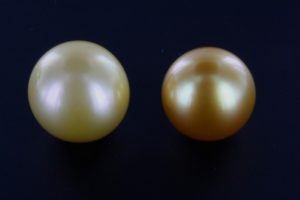
golden pearls from Lombok in Indonesia
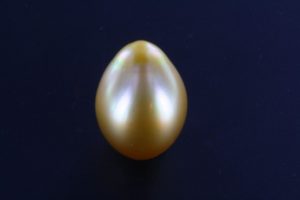
baroque cultured pearl of Indonesia
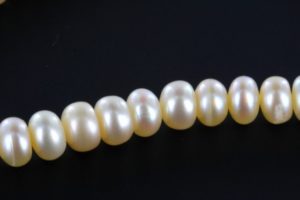
necklace of freshwater pearls from China
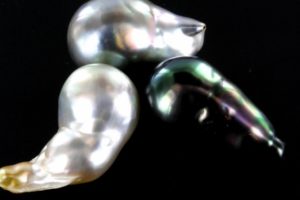
baroque culture pearls of Tahiti
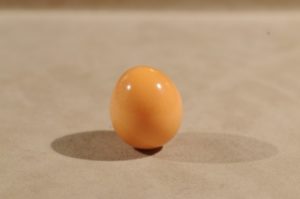
natural “ conch “ pearl
Detailed sheet
pearl
The “fine” pearls are mentioned in texts dating from 2300 BC. and the oldest necklace dates from the fifth century BC. They were the object of lust of Roman Emperors, Cleopatra, Chinese Emperors, the Maharajas in India. Pearls in Europe enjoyed a great vogue when the Crusaders brought them back from the east and the sixteenth century was even called the century of the pearl.
They are “manufactured” by marine mollusks and freshwater, and are composed of calcium carbonate (calcite and aragonite) and a cornea organic substance, the conchiolin.
When a foreign body (a grain of sand, parasite, algae) enters the flesh of a shell, this responds by secreting the pearl material to protect itself and expel it. All shellfish can produce “pearls” but are the oysters, the pinctadines, which resemble to the Marennes oysters, that produce the most beautiful ones. The perfectly spherical pearls are very rare, the irregular ones are called “baroque”.
Their colors: white, pink, silver, cream, gold, black-blue … depending on the shell that makes the pearl and the environment in which it lives. Their satin reflection is very special because of what we call “the orient”, caused by the penetration of light through the multiple thin layers of pearl (superposition of layers of aragonite and conchiolin) that causes the phenomena of light interference (iridescence) and “luster”, the surface reflection of light. The combination of these two phenomena is that the pearl has no equal among the gems.
We call “Keshi”, which is the name of a poppy seed in Japanese, a kind of wrong pearl which is formed by the nacre secreted by the graft during the rejection of the nucleus. “Mabe” is the name of a half-pearl set in nacre. The “Akoya Pearl” is the name of the traditional Japanese culture pearl.
The “conch” pearl is not made of nacre like other pearls is a calcareous concretion and it does not have nucleus or nuclei. They are produced by the conch which is a mollusca: the Strombus Gigas, found in the Caribbean region. It can be considered as a fine pearl, because produced without human intervention. This pearl is rare: only a mollusca on 100,000 contains one, generally small, less than 3 mm and of baroque form. Regular shapes resemble as an egg. They can be brown, pink, yellow, white and sometimes golden. The salmon color is the most coveted, brown and white are too. The harvest of this pearl is artisanal, it is the fishermen who discover them, by extracting the edible pulpit of the snail .

CHEMICAL CHARACTERISTICS

PHYSICAL CHARACTERISTICS
Main color
white
Other colors
blue, grey, yellow, black, pink, green
it depends on the color of the outer layers of conchiolin secreted by the animal depending on its species and its environment.
Color of streak
white
Luster
pearly
Hardness
2.5 to 4.5
Density
2.60 to 2.90
Cleavage
none
Fracture
uneven

OPTICAL PROPERTIES
Transparency
opaque, translucent
Refractive index
1.500 - 1.690
Double refraction
0.155
strong
visible double refraction
No
Pleochroism
absent
Number of colors
1
Fluorescence
variable
Low fluorescence for pearls of marine origin, red to reddish for black natural pearls, strong and light green for freshwater pearls.

CRYSTALS PROPERTIES
microcrystalline structure
crystals system
orthorhombic

OTHER INFORMATIONS
Astrological sign
Aries, Capricorn, Gemini, Libra
Month
june
Chinese astrological sign
Rabbit

APPROACHING GEMS
Exploited
sites
We find the pearl oysters, the size of the hand, in reefs, at a depth of 15-20 m, in the Persian Gulf, the Gulf of Mannar (between India and Sri Lanka).
Other pearl oysters, up to 30 cm in diameter are known along the coasts of the former Burma, the Philippines, south Pacific Islands, northern Australia and Central America.
Japan remains the world’s largest producer . The coasts of Polynesia harbor oysters producing renowned black pearls.
There is only about thirty or forty oysters that contain a pearl. They are fished by snorkeling. Natural pearls, or fine pearls, occur without human intervention and are nowadays rarities. World trade is now practiced on cultured pearls.
Marketing of cultured pearls, from sea water, started in Japan in 1920: Mikimoto had the idea of introducing a ball of nacre with a piece of epithelial cell in the gonad of oysters. He obtained white pearls type “Akoya” in diameter from 2 to 8 mm. From 1960, in the South Seas and French Polynesia, developed a pearl cultivation of larger white, gray and golden, pearls. Diameters are up to 20 mm.
The freshwater pearls were always known in Northern Europe, they are very small but have been widely used for embroidery, icons … they were found in the “unios”. Since 1960, the first cultured freshwater pearls come from the Lake Biwa in Japan. They are 20 grafts without core shell, which are introduced into the mantle.
China has launched itself since 1970 in the industrial production of freshwater pearls, whose quality and size is steadily improving. Production is expressed in tons.
use in jewelry
Pearls are mounted in necklaces, earrings, rings on or pins, or crowns, tiaras … In one necklace, of one or more places (necklace), they are either all of the same diameter, or of variable diameter “choker”, the largest being located in the center ” in falling”.
The diameter of the hole is fixed by international rules: 0.3 mm for natural, 0.5 mm for cultured pearls. They are evaluated based on many complex criteria and their weight is calculated in grains (0.05 g or 1/4 carat), the word “cultured” has to be added imperatively.
The “mabe” is a half-cultured pearl used for earrings or rings.
The pearl is the “stone” anniversary of the third year of marriage and also the “stone” of the 30th anniversary year of marriage.
Daily care
and precautions
Of low hardness, shock sensitive, they scratch on contact with hard stones, they wear and store with caution. They are attacked by acids, cosmetics, perfumes, hair spray, or sweating. They fear the heat: containing 2% water, they “age” by dehydration of conchiolin, becoming dull-cracking. Their life is unpredictable. Their regular reporting to a professional for their maintenance is recommended. After being worn, they should be wiped off one by one with a chamois.
imitations and
treatments
Their imitation, obviously, has not been ignored. The most common is the ball of glass, enamel, plastic … covered with a coating based on fish scales (essence d’orient) or a salt of lead or bismuth (dangerous).
It is prohibited the sale of pearls “akoya” blacking with silver salts, without mentioning it.
In the Mediterranean, are sold pearls called “Majorica” completely artificial.
improvements
The pearls may be bleached or dyed to have a slightly pink color … these treatments are allowed.By removing a thin layer we improve fine the pearls …. having lost its “east”, this is called the peel.
Historical
healing properties
The spherical pearl and of discreet luster, symbolizes female perfection, and in India, is credited with the qualities of the Divine Mother, namely beauty, softness, protection, force creating. She reminds us that every painful experience of life can be transformed into an opportunity and lead to perfection. The pearl teach us that helping an intruder, by not chasing it, accepting it without prejudice, a process of inner development will be capable of carrying at our consciousness level some feelings, some wounds will be forgotten and repressed and will help us discover some of our emotional blocks and to solve them.
It is said that wore as a necklace, the pearls protect from misfortune, conserve and love the beauty of youth. They dispel the night fears. The pearl powder mixed with lemon juice was regarded in antiquity as a tonic. It has been said that derived from a pearl was an essence (?) that in combination with a bee balm, removed the buttons of the skin and sores and that this, mixed with the juice of guaiac, was a remedy against venereal diseases.
As they would capture the vibrations of their carriers, these should neutralized them by soaking the pearls in pure sea salt or sea water brine and then dry them gently and put them under the the moonlight .
They open the solar plexus chakra to access the mental body, and if the color of the pearl plays a role, it is always soothing, being the reflection of oneself, committing to the truth. Its magnifying effect exaggerates the defects revealed, to know them better and control them. When the pearl is black, it becomes protective, and her ever present shades also produce subtle effects on the body and mind, it suits perfectly the base chakra while the very white ones fit the superiors chakras. Because of its purity, associated with Aphrodite, it would m irresistible, giving patience, delicacy, tenderness, soothing the revolted mind.
historical stones
and related legends
The largest known, the “Pearl of Asia”, after the clam shell, weighs 575 carats. The Hope, kept at the Geological Museum of London, 5 cm long, weighs 454 carats (90.8 g).
The Hindu mythology says that the god Krishna extracted them from the seabed to adorn his daughter Pandaia on the day of her wedding. Aphrodite comes out of the waves and addresses Cythera on a pearl oyster shell. Pliny (Natural History, Book IX), claims that, stimulated by the new season, the shells opened, getting filled with dew drops that turned them into pearls, the quality of dew could be found in them (white with a pure dew, colored if the dew is impure) A stormy sky made them pale. the Gospel of St. Matthew says that “the kingdom of heaven is like a merchant looking for fine pearls: having found one of a great value, he went to sell all he owned to buy it “.
In the Middle Ages, we also read that ” the pearl is pregnant of the heaven and lives only on heavenly nectar to give birth to the argentine pearl, or pale, or yellowish, depending on the sun given to it and if the dew is pure “(Rene Francis, Essay of the wonders of nature and of the noblest artifice. Paris, 1657).
The loss of a pearl would be the announcement of a next great misfortune and there is an anecdote about the conquistador Cortez who, showing off on the deck of his boat that brought him back to Spain a very large pearl, that he had obviously stolen, she dropped and fell overboard : he never reigned over the New World …
Venez visitez
notre site web
voillot-joaillier.fr
Lorem ipsum dolor sit amet, consectetur adipiscing elit. Ut elit tellus, luctus nec ullamcorper mattis, pulvinar dapibus leo.Lorem ipsum dolor sit amet, consectetur adipiscing elit. Ut elit tellus, luctus nec ullamcorper mattis, pulvinar dapibus leo consectetur adipiscing elit. Ut elit tellus, luctus nec.

